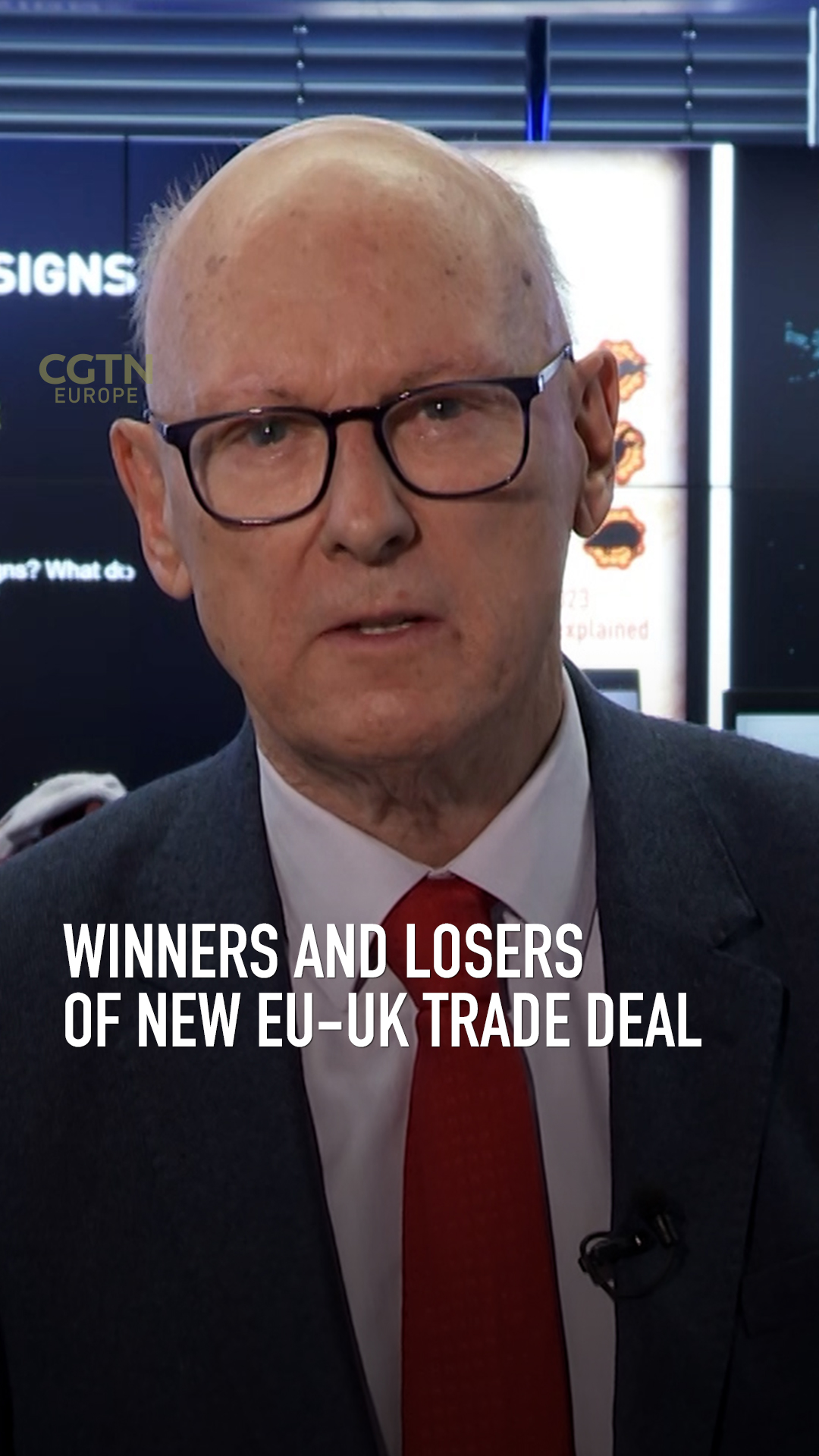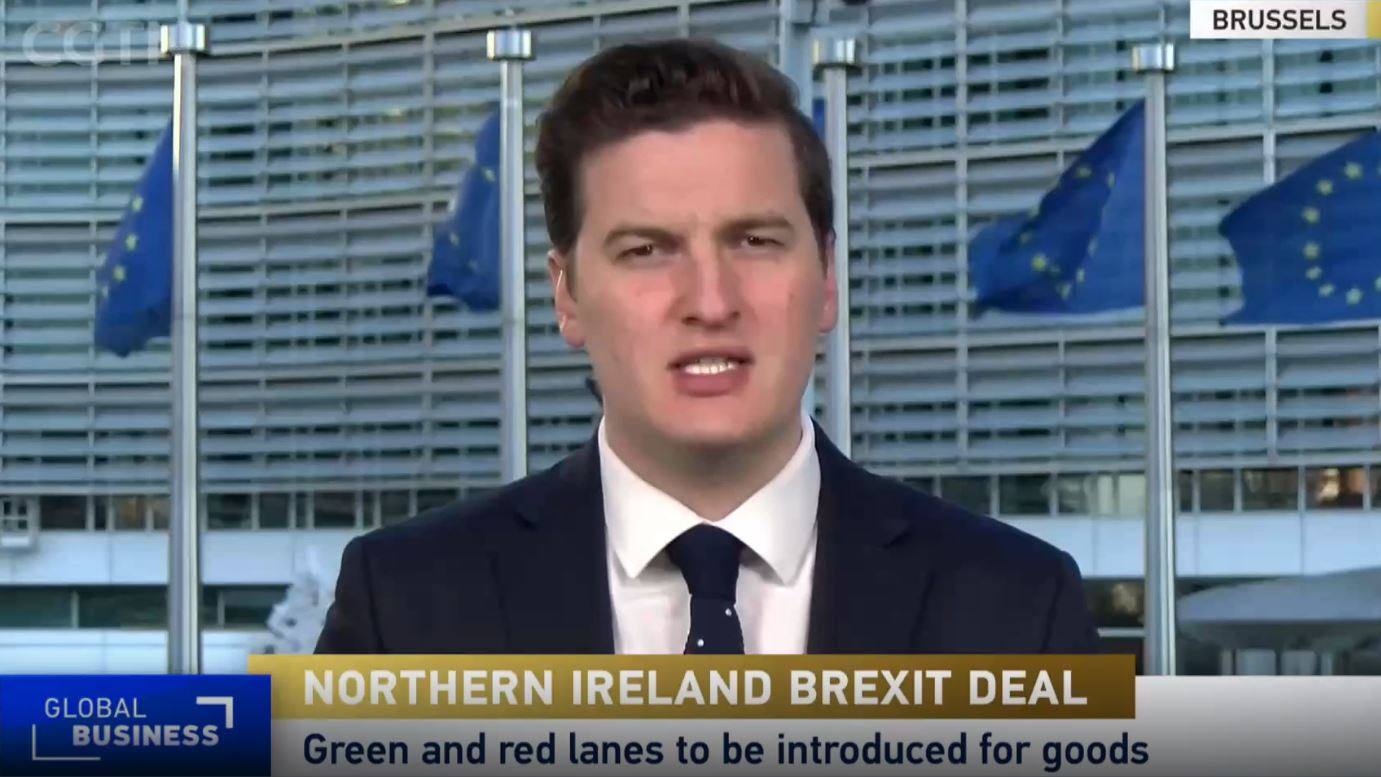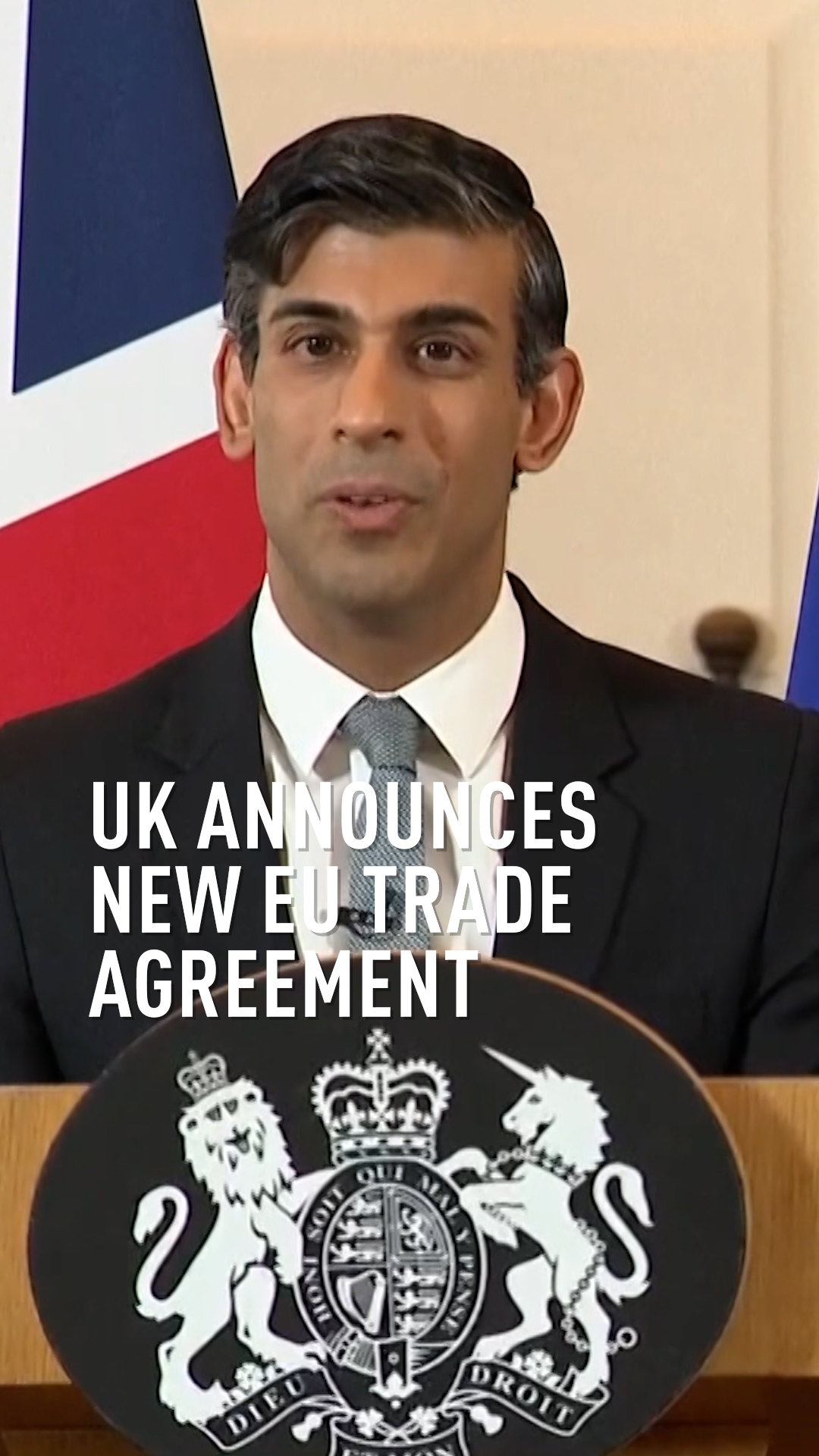01:25

UK Prime Minister Rishi Sunak and President of the European Commission Ursula von der Leyen have announced a new deal to ease restrictions on trade between Northern Ireland and Britain. The agreement would also give lawmakers on the ground a greater say over the rules and regulations they follow from Brussels.
The deal seeks to resolve tensions caused by the Northern Ireland Protocol, a complex agreement which set the trading rules for the British-governed region that London drew up before it left the EU but now says are unworkable.
It still needs to be ratified though. UK Parliament looks set to give it the green light, but what about Northern Ireland's largest unionist party, the Democratic Unionist Party? Its leader Jeffrey Donaldson says they will study the deal before delivering a "collective view" on whether to support it.
Alex Cadier has been watching events unfold from Brussels for CGTN Europe.
What is it and how does it work?
The deal was unveiled on Monday and has been reached on changes to the post-Brexit Northern Ireland Protocol.
The new deal, called the Windsor Framework, is the result of nearly two years of negotiations between the UK government and the EU.
READ MORE
UK and EU announce NI Brexit deal
Searching for sustainability
'My heart is back home in Ukraine'
03:29

What is the new system of green and red lanes for goods?
The new two lane system allows trucks carrying goods into Northern Ireland from the rest of the UK to declare if their cargo is destined for Northern Ireland or the EU.
This system allows goods traveling to Northern Ireland only to be taken through a "green lane" with little to no checks at the border. Goods traveling to the EU will go through the "red lane" where goods will be checked as normal.
According to the EU and UK government, this new system will make border crossings far more frictionless and boost the free flow of goods into Northern Ireland, where the previous system had all goods entering Northern Ireland being checked.
What role will the European Court of Justice play in the UK?
As Northern Ireland will remain in the EU's single market, the European Court of Justice (ECJ) will continue to have jurisdiction in Northern Ireland on matters of EU law.
That said, the EU and the UK have both committed to working together to avoid matters being adjudicated by the ECJ by working bilaterally to resolve issues and deferring persistent issues to neutral arbitration panels before, as a last resort, allowing a dispute to be ruled on by the ECJ.
Crucially, the European Court of Justice will not have a role to play in arbitrating the Stormont Brake, a new feature of this deal.
00:32

What is the Stormont Brake?
This is a procedure through which the UK government can stop new EU laws from being applied in Northern Ireland in exceptional circumstances.
For the brake to be applied by London, it must first be requested by a third of the lawmakers in Northern Ireland's assembly.
Once a new law is blocked, it can only be applied in Northern Ireland if an agreement is reached within the joint EU-UK committee created by the UK's Withdrawal Agreement.
The brake is viewed as a tool of last resort that will reassure Brexit supporting MPs in Westminster who worry the EU could overreach in applying new laws to Northern Ireland.
What does it mean for EU-UK relations?
The view by many in Brussels is that a key factor in getting the deal over the line, is the change in attitude in Downing Street.
Since taking office, Rishi Sunak struck a more conciliatory tone in his dealing with the EU, as did his Foreign Secretary James Cleverly. This in turned nudged the EU towards new concessions.
The deal also unlocks a number of deadlocked discussions between both sides. In particular, von der Leyen has said talks can resume on the Horizon Europe partnership for science funding.
This could mean billions in EU money being invested in scientific research in the UK.